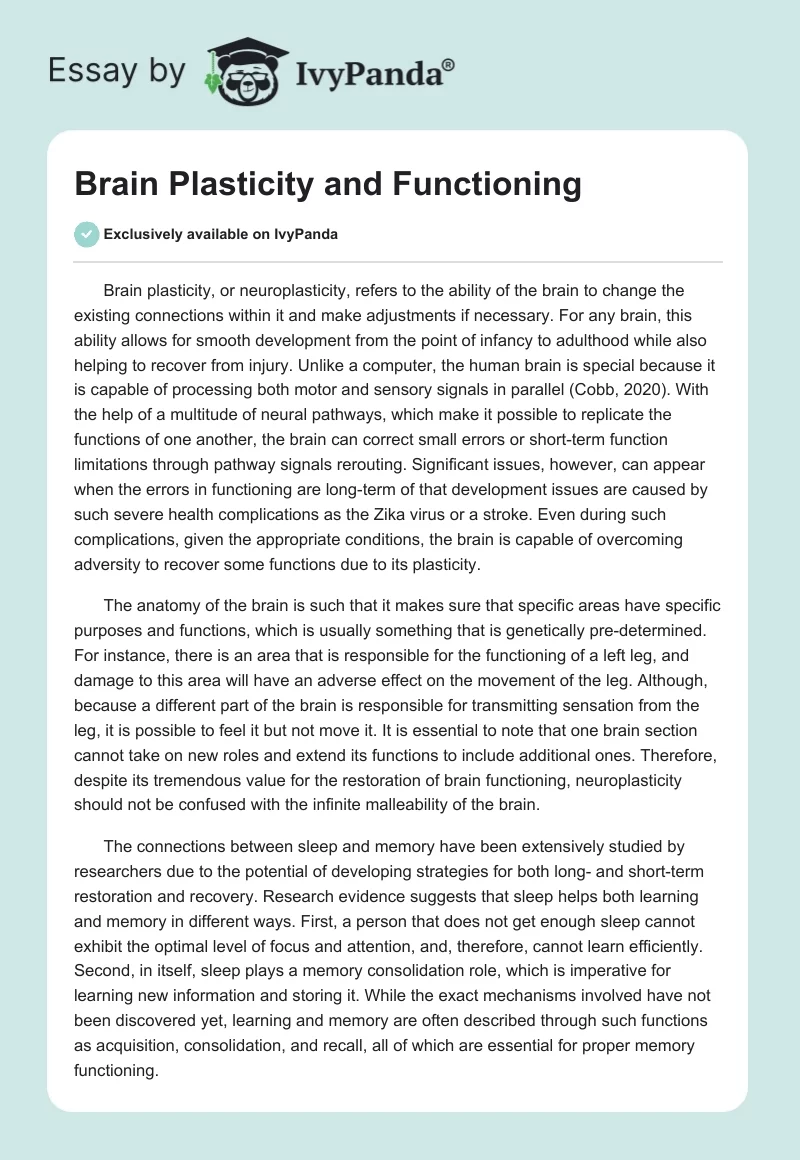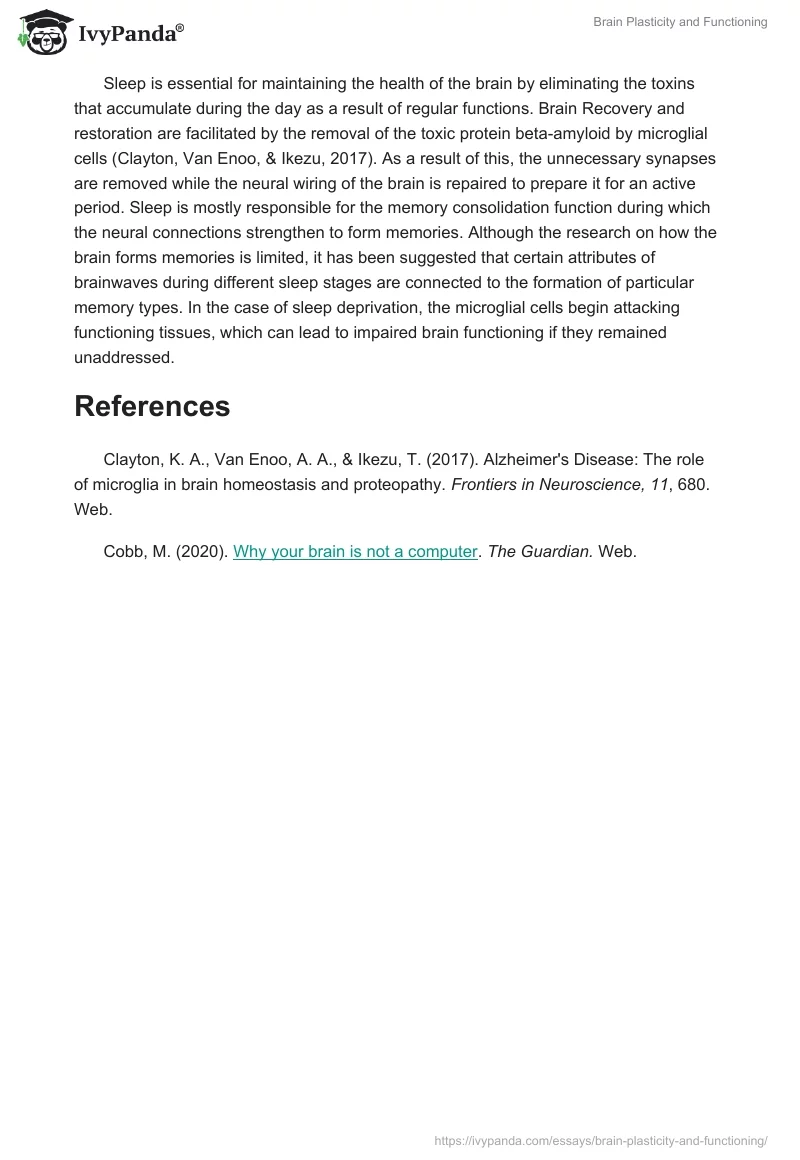Brain plasticity, or neuroplasticity, refers to the ability of the brain to change the existing connections within it and make adjustments if necessary. For any brain, this ability allows for smooth development from the point of infancy to adulthood while also helping to recover from injury. Unlike a computer, the human brain is special because it is capable of processing both motor and sensory signals in parallel (Cobb, 2020). With the help of a multitude of neural pathways, which make it possible to replicate the functions of one another, the brain can correct small errors or short-term function limitations through pathway signals rerouting. Significant issues, however, can appear when the errors in functioning are long-term of that development issues are caused by such severe health complications as the Zika virus or a stroke. Even during such complications, given the appropriate conditions, the brain is capable of overcoming adversity to recover some functions due to its plasticity.
The anatomy of the brain is such that it makes sure that specific areas have specific purposes and functions, which is usually something that is genetically pre-determined. For instance, there is an area that is responsible for the functioning of a left leg, and damage to this area will have an adverse effect on the movement of the leg. Although, because a different part of the brain is responsible for transmitting sensation from the leg, it is possible to feel it but not move it. It is essential to note that one brain section cannot take on new roles and extend its functions to include additional ones. Therefore, despite its tremendous value for the restoration of brain functioning, neuroplasticity should not be confused with the infinite malleability of the brain.
The connections between sleep and memory have been extensively studied by researchers due to the potential of developing strategies for both long- and short-term restoration and recovery. Research evidence suggests that sleep helps both learning and memory in different ways. First, a person that does not get enough sleep cannot exhibit the optimal level of focus and attention, and, therefore, cannot learn efficiently. Second, in itself, sleep plays a memory consolidation role, which is imperative for learning new information and storing it. While the exact mechanisms involved have not been discovered yet, learning and memory are often described through such functions as acquisition, consolidation, and recall, all of which are essential for proper memory functioning.
Sleep is essential for maintaining the health of the brain by eliminating the toxins that accumulate during the day as a result of regular functions. Brain Recovery and restoration are facilitated by the removal of the toxic protein beta-amyloid by microglial cells (Clayton, Van Enoo, & Ikezu, 2017). As a result of this, the unnecessary synapses are removed while the neural wiring of the brain is repaired to prepare it for an active period. Sleep is mostly responsible for the memory consolidation function during which the neural connections strengthen to form memories. Although the research on how the brain forms memories is limited, it has been suggested that certain attributes of brainwaves during different sleep stages are connected to the formation of particular memory types. In the case of sleep deprivation, the microglial cells begin attacking functioning tissues, which can lead to impaired brain functioning if they remained unaddressed.
References
Clayton, K. A., Van Enoo, A. A., & Ikezu, T. (2017). Alzheimer’s Disease: The role of microglia in brain homeostasis and proteopathy. Frontiers in Neuroscience, 11, 680. Web.
Cobb, M. (2020). Why your brain is not a computer. The Guardian. Web.


